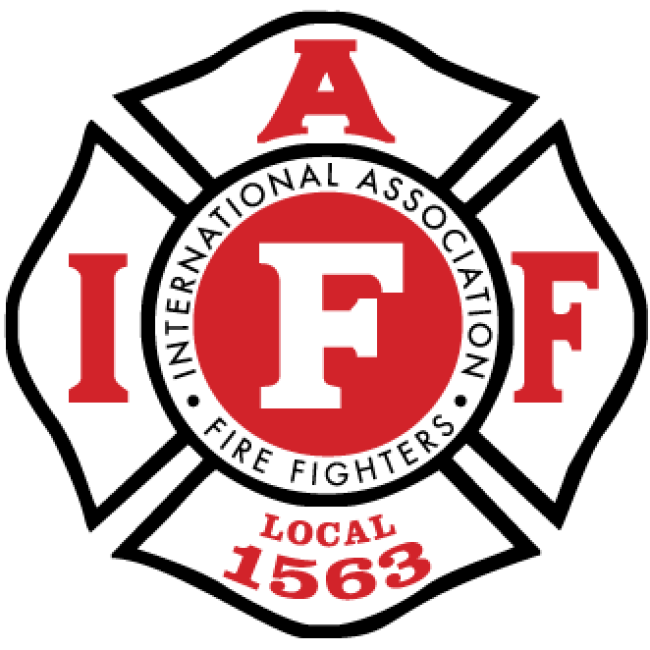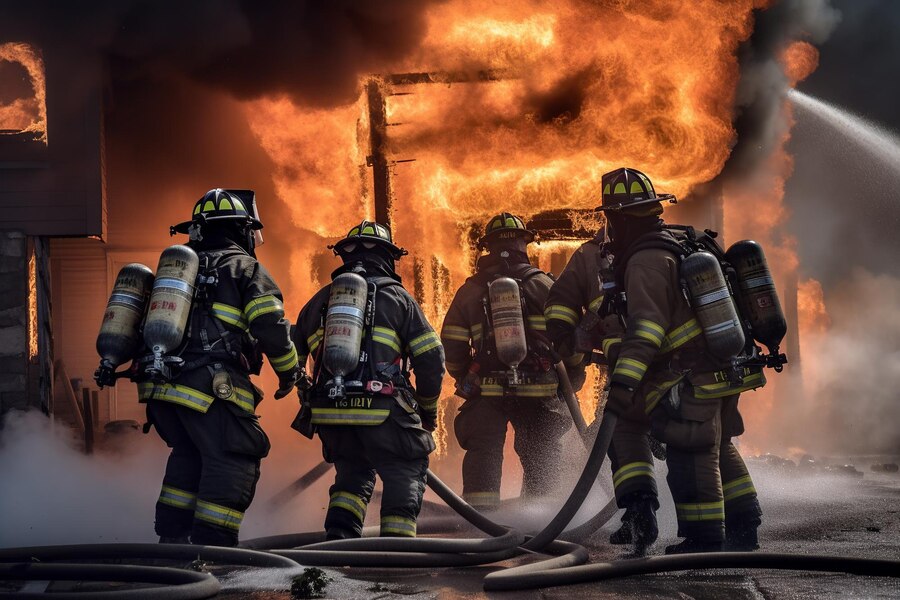Firefighters in Maryland are essential frontline heroes who selflessly put themselves in harm’s way to protect the lives and property of residents in the state. With their courage, dedication, and expertise, firefighters play a vital role in responding to emergencies, providing assistance, and educating communities on fire safety. In Maryland, these brave men and women work tirelessly to ensure the safety and well-being of their fellow citizens. Let’s delve deeper into the critical role firefighters play in Maryland and their impact on the communities they serve.
History of Firefighting in Maryland
The history of firefighting in Maryland dates back to the early days of the state’s settlement, where volunteer fire companies were established to combat fires in the growing towns and cities. The Great Baltimore Fire of 1904 was a turning point for firefighting in Maryland, leading to advancements in fire prevention, equipment, and training.
Over the years, the state has prioritized fire safety and emergency response by forming professional fire departments and implementing rigorous training programs. Today, Maryland boasts a strong and dedicated firefighting community that works tirelessly to protect the lives and property of its residents.
The Importance of Firefighters Play in Maryland
Firefighters play a crucial role in Maryland, serving as first responders to various emergencies, including fires, medical incidents, hazardous material spills, and natural disasters. Their quick response and specialized training save lives, protect property, and ensure the safety of communities across the state. In addition to fighting fires, firefighters in Maryland are often involved in public education and fire prevention programs, which help to reduce the risk of fires and promote safety awareness.
Their dedication, bravery, and selflessness make them indispensable members of society, providing comfort and assistance in times of crisis. Without the tireless efforts of firefighters in Maryland, the impact of emergencies and disasters would be far more devastating. They are true heroes who deserve our respect, gratitude, and support.
Responsibilities of Firefighters in Maryland
Firefighters in Maryland play a crucial role in ensuring the safety and well-being of residents. They are highly trained professionals who respond to various emergencies and perform a range of duties to protect lives and property.
- Emergency Response: Firefighters in Maryland are the first responders to fires, medical emergencies, car accidents, and other disasters. They work quickly and efficiently to provide aid and support to those in need.
- Fire Prevention and Education: Firefighters also play a crucial role in educating the community about fire safety and prevention measures. They conduct inspections, install smoke detectors, and offer training programs to help reduce the risk of fires.
- Rescue Operations: Firefighters in Maryland are trained in technical rescue operations, including water rescues, high-angle rescues, and confined space rescues. They are prepared to respond to various emergencies and save lives in difficult situations.
- Community Engagement: Firefighters engage with the community through outreach programs, public events, and educational initiatives. They build relationships with residents to foster a sense of trust and support within the communities they serve.
Training and Education
Firefighters in Maryland must undergo rigorous training and education to ensure they are prepared for the demands of their profession. Training typically includes completing a firefighting academy program covering topics such as fire behavior, hazardous materials, and emergency medical procedures. In addition, firefighters must obtain certification as Emergency Medical Technicians (EMTs) to provide medical assistance during emergencies.
Maryland firefighters have ongoing training and professional development opportunities to help them stay current with the latest techniques and technologies in firefighting. These may include specialized training in technical rescue, arson investigation, and leadership development. Professional organizations, such as the Maryland Fire and Rescue Institute, offer a variety of training courses and workshops to support career advancement and skill development for firefighters.
Equipment and Technology
In Maryland, firefighters rely on advanced equipment and technology to effectively respond to emergencies and protect the community. From state-of-the-art firefighting gear to cutting-edge communication systems, these tools play a crucial role in ensuring the safety and efficiency of firefighting operations. Some of the vital equipment and technology used by firefighters in Maryland include:
- Thermal Imaging Cameras: Thermal imaging cameras are essential tools for firefighters in Maryland, enabling them to identify hot spots, locate individuals in smoke-filled environments, and navigate through low-visibility conditions, ultimately enhancing their ability to respond to emergencies effectively.
- Self-Contained Breathing Apparatus (SCBA): Self-contained breathing apparatus (SCBA) units provide crucial respiratory protection for firefighters, supplying them with breathable air in hazardous environments. This equipment ensures the safety and well-being of firefighters in potentially life-threatening situations.
- Firefighting Drones: Firefighting drones equipped with cameras and thermal imaging technology offer valuable aerial support to firefighters in Maryland. These drones allow for efficient assessment of fire scenes, real-time data collection, and strategic planning of firefighting operations from above.
- Gps And Mapping Systems: GPS and mapping systems are indispensable tools enabling firefighters to navigate swiftly and accurately to emergencies. These technologies facilitate a prompt response to incidents, ensuring that resources are deployed efficiently to address emergencies promptly.
- Mobile Data Terminals: Mobile data terminals play a vital role in enhancing communication and coordination among firefighters in Maryland. These devices grant access to critical information, enable seamless communication with dispatchers, and support efficient coordination of response efforts during emergencies.
Fire Prevention and Education
Fire prevention and education are crucial aspects of the firefighting profession in Maryland. Firefighters respond to emergencies and work to prevent fires from occurring through education and outreach programs. They play a vital role in keeping communities safe by raising awareness about fire safety practices and promoting fire prevention measures.
Four key fire prevention and education initiatives in Maryland include:
- Community Outreach Programs: Firefighters engage with schools, community centers, and other organizations to educate individuals about fire safety practices and emergency preparedness.
- Smoke Alarm Installation Campaigns: Fire departments in Maryland conduct campaigns to install and maintain smoke alarms in homes to reduce the risk of fire-related injuries and deaths.
- Fire Safety Inspections: Firefighters conduct inspections of commercial buildings and residential properties to ensure compliance with fire safety regulations and identify potential hazards.
- Fire Safety Workshops And Training Sessions: Fire departments offer workshops and training sessions on fire extinguisher use, evacuation procedures, and kitchen safety to empower individuals with the knowledge and skills to prevent fires.
Challenges Faced by Firefighters in Maryland
Firefighters in Maryland face various challenges in their line of work, requiring them to be well-trained, adaptive, and resilient. From battling intense fires to managing complex emergencies, firefighters encounter numerous obstacles that test their skills and determination. Understanding these challenges is essential for improving the effectiveness and safety of firefighting operations in Maryland.
Five critical challenges faced by firefighters in Maryland include:
- Hazardous Environments: Firefighters often work in hazardous environments with extreme temperatures, toxic smoke, and unstable structures, increasing the risk of injury or exposure to dangerous substances.
- Limited Resources: Fire departments in Maryland may face budget constraints, staffing shortages, or outdated equipment, impacting their ability to respond effectively to emergencies.
- Mental And Physical Strain: Firefighting is physically demanding and mentally challenging, leading to stress, fatigue, and potential long-term health consequences for firefighters.
- Changing Firefighting Landscape: The prevalence of new building materials, technologies, and environmental factors challenges firefighters in effectively adapting their tactics and strategies to combat modern fires.
- Increasing Call Volume: Fire departments in Maryland are facing an increase in emergency calls, leading to higher demand for services and potential strain on resources and personnel.
Community Outreach and Engagement
Community outreach and engagement are essential components of the firefighting mission in Maryland. Firefighters actively engage with local communities through various initiatives to foster relationships, educate residents on fire safety practices, and promote emergency preparedness. These efforts include participating in community events, conducting fire station tours for schools and groups, and hosting CPR and first aid training sessions.
Firefighters also collaborate with community organizations to develop targeted outreach programs that address specific fire safety concerns within different neighborhoods. By building solid connections with residents and stakeholders, firefighters in Maryland can effectively communicate important safety information, establish trust, and work together to create safer and more resilient communities.
Collaborations with Other Emergency Services
Collaboration with other emergency services is a critical aspect of Maryland’s firefighting efforts. Firefighters often work closely with paramedics, law enforcement, and other first responders to ensure a coordinated and efficient emergency response. These agencies can effectively address complex and multi-faceted emergency situations by sharing resources, expertise, and information. In Maryland, firefighters participate in joint training exercises and drills with other emergency services to improve communication, coordination, and teamwork.
Additionally, firefighters collaborate with local hospitals, emergency management agencies, and government organizations to develop comprehensive emergency response plans and protocols. Through these collaborative efforts, emergency services in Maryland can enhance their ability to protect and serve the community during times of crisis.
In conclusion, the essential role of firefighters in Maryland cannot be overstated. Their selfless dedication and quick response during emergencies are paramount in maintaining the safety and well-being of our communities. As we express our appreciation for their invaluable services, let us also show our support through actions such as donations, volunteering, and kind words of thanks.
To make a difference in the lives of Maryland firefighters, consider reaching out to Anne Arundel County Professional Fire Fighters Local 1563 at 410-987-1180. Together, let us continue to uphold and support these brave individuals who work tirelessly to keep us safe.

